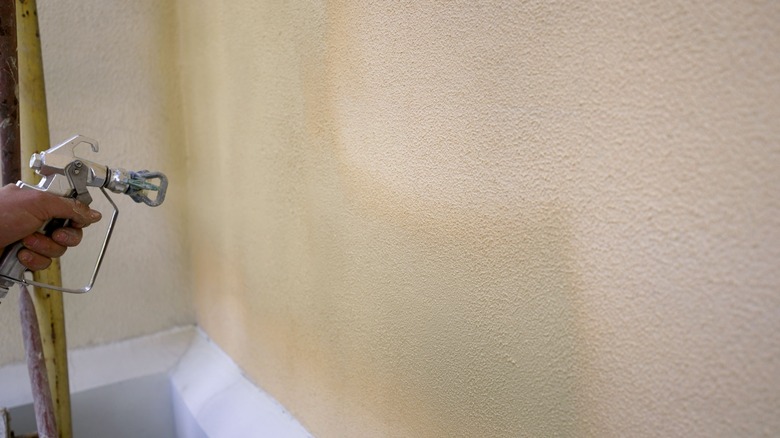Extend The Life Of Your Airless Paint Sprayer With A Proper Cleaning Regimen
We may receive a commission on purchases made from links.
Cleanup is crucial in DIY projects, including after you've used your airless paint sprayer. To avoid a clogged paint sprayer caused by residue from previous paints, you'll want to clean it after every use in order to keep your tool working well for as long as possible. While some specifics of your cleaning solutions will vary with the type of paint you've been using, there's a general process to follow to clean your paint sprayer: release the pressure, flush the paint, and rinse all the parts.
First thing to know: you'll always want to release the pressure from your sprayer. Turn your power button off, set your sprayer's pressure to its lowest setting, then trigger your spray gun until you've released the pressure. While you're doing this, you'll want to make sure that you're holding a metal part of the spray gun to a metal bucket — this will keep it grounded against sparks from static discharge. Make sure to refer to the instruction manual for your specific sprayer for further safety considerations. It's also a good idea to wear nitrile gloves during this whole process.
Flushing your paint sprayer
You'll also want to remove your airless paint sprayer's filter, guard, and switch tip and clean these components separately. Your cleaning solution will depend on the type of paint you've been using most recently: for water-based paints, you can use warm water; for oil-based paints, you'll want paint thinner or mineral spirits. Don't forget to also clean out any detachable hoses.
You can flush the paint from an airless paint sprayer using a two-bucket method. The process involves putting your intake hose into one bucket that contains your cleaning solution, then placing your drain tube so that the spray empties into another bucket. Run the sprayer, starting at low pressure, until you see the liquid going into the second bucket run clear, free of paint. You can start this process by spraying your second hose into the can your paint came out of, switching to your dirty bucket when you start seeing your cleaning solution come out. This helps you save any leftover paint for your next project.
After you've completed the flushing procedure and cleaned all detachable parts, you'll want to rinse everything off. An additional flushing with mineral spirits or a solution specially designed for sprayers, like Graco's Pump Armor, can provide a protective coating against freezing or corrosion. Make sure to also wipe clean the exterior of your airless paint sprayer before storing it, cleaned and ready to use for a perfect finish on your next DIY.

